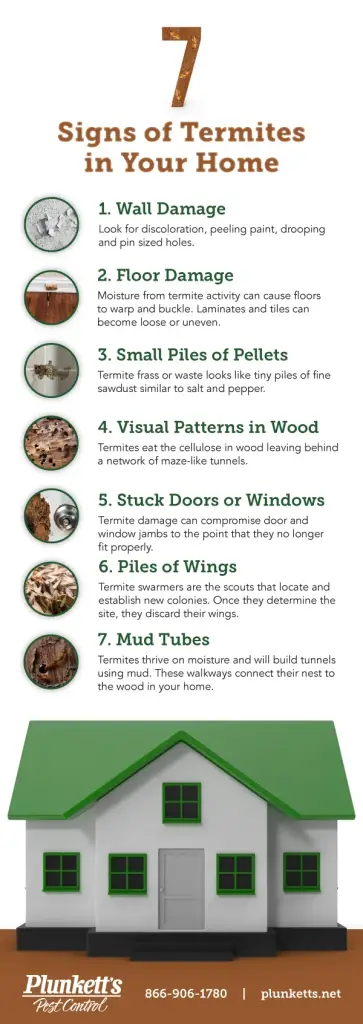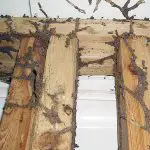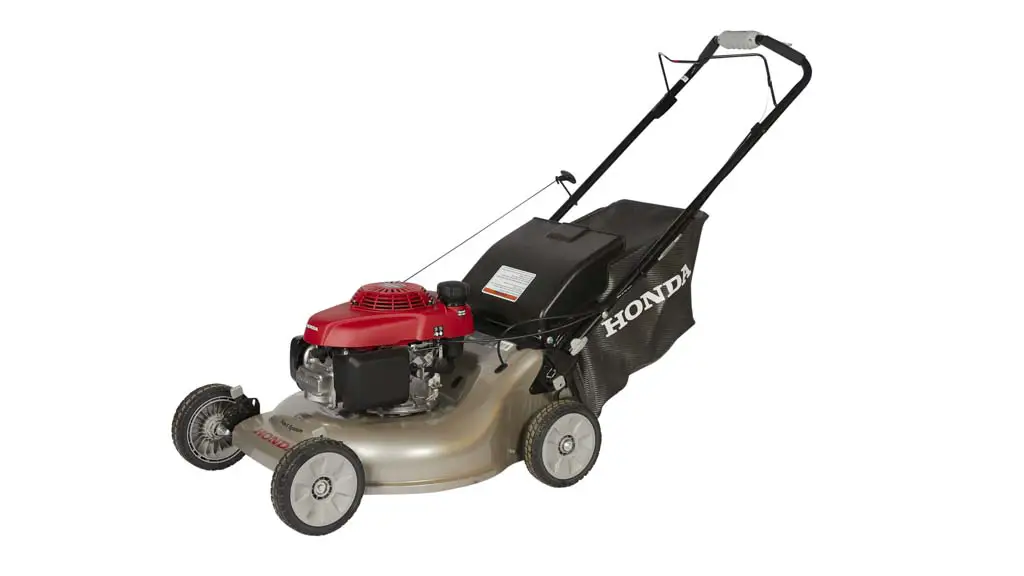How to Tell If Your House Has Termites: Detecting termites early is crucial. Start by looking for wood damage or mud tubes on foundation walls. Another sign is hollow sounds in wooden structures when tapped, which could indicate termite activity inside.
Termites are a homeowner’s silent nightmare, quietly causing damage that can lead to extensive and costly repairs. Recognizing the early signs of an infestation is crucial in safeguarding your home from these elusive pests. Subtle clues like discarded wings near windows or doors and termite droppings, which resemble tiny wood pellets, may indicate their presence.
Swift identification allows for prompt treatment, preventing the termites from establishing a stronghold within the structural elements of your home. Homeowners should be vigilant, conducting regular inspections to catch these signs early, ensuring the integrity and safety of their property.
Early Warning Signs Of Termites
Termites remain elusive creatures capable of compromising your home’s integrity. Many homeowners realize the infestation when it’s too late. Identifying early warning signs can save structures and finances. This guide helps discern subtle hints that termites might be staging a silent invasion.
Visual Evidence Of Termites
Spotting live termites is a definite sign of infestation. Look for small, white or pale insects. They are occasionally mistaken for ants but bear distinct differences. Wings piled near your home’s foundation, windows, or doorways also indicate their presence, as termites shed wings after finding a new place to colonize.
- Mud tubes on exterior walls protect termites from predators and maintain a humid environment for them.
- Distorted paint or wood that sounds hollow when tapped might conceal termite tunnels.
Sounds And Smells Of Infestation
Termites communicate by banging their heads. This makes a clicking noise. They also make sounds while eating wood. These sounds are very quiet. You need to listen closely.
When To Listen
Termites are more active at night. This is the best time to listen. You can also hear them during the day, but it’s rare. Quiet rooms are best for listening. Turn off all noise sources like TVs and radios.
- Head-banging termites
- Wood-eating noises
These sounds are usually faint. Place your ear close to the wall. You may also use a stethoscope. If you hear clicking, investigate further. It could save your home from damage.
| Time | Activity |
|---|---|
| Night | Best time to listen |
| Day | Less common, but possible |
A noticeable musty odor often accompanies a termite infestation. This scent stems from the chemicals they release. It bears resemblance to mildew or mold. If you detect such unusual smells from floors or walls, it merits a closer investigation for termites.
Swarm Season: Nature’s Alert System
Each year, termites signal their presence through an event known as swarm season. This natural alarm warns homeowners of potential infestations. Understanding swarm season helps identify a termite threat early on. Let’s dive into spotting these critters and the timing of their swarming patterns.
Identifying Termite Swarms
Spotting a termite swarm often marks the first sign of a termite problem. Swarms consist of flying termites, also known as alates, searching for new places to establish colonies. These swarms are brief but critical to notice.
- Swarmers are attracted to light, so check around windows and doors.
- Discarded wings near entry points are clear evidence of a swarm.
- A group of insects in flight or on the ground can signal a swarm.
Seeing these signs demands immediate attention. A termite specialist can confirm the situation.
Seasonal Patterns Of Termite Swarming
Termites follow clear seasonal patterns for when they swarm. These patterns vary by species and location. The following table lays out key swarming periods:
| Termite Type | Swarm Season |
|---|---|
| Subterranean Termites | Spring |
| Drywood Termites | Late summer to early fall |
| Formosan Termites | Late spring to early summer |
Understanding these patterns helps anticipate and prevent infestations. Regular checks during these times are critical. Homeowners should stay vigilant, as local climate conditions can also affect swarming. Engage a professional for an annual termite inspection.
Termite Droppings: A Telltale Clue
Finding termite droppings in your home can be alarming. Termites tend to leave behind a distinct signature in the form of frass. Recognizing this early sign of infestation is crucial for protecting your property.
Characteristics Of Termite Frass
- Shape: Unlike regular dirt, termite frass has a uniform, six-sided shape.
- Size: Frass particles are often small, about 1mm long.
- Color: They usually match the color of the wood termites have been eating.
Regular inspections in common wood-affected areas such as windowsills can reveal these tiny clues to an active infestation.
Frass Vs. Sawdust: Knowing The Difference
| Frass | Sawdust |
|---|---|
| Pellet-shaped | Fluffy and irregular |
| Hard and ridged | Soft and fine |
| Dark or the same color as damaged wood | Light-colored |
Understanding the difference between frass and sawdust is key. It helps pinpoint a termite issue before costly damage sets in.

Credit: emoyer.com
Mud Tubes: Termites’ Hidden Highways
Discovering mud tubes on your property signals a secret invasion by termites. These tiny insects construct hidden highways that protect them from predators and maintain a moist environment, crucial for their survival. Mud tubes are a red flag, hinting at a potential termite problem that homeowners should address immediately.
Structure And Purpose Of Mud Tubes
Termites build mud tubes as protective tunnels made from soil, wood particles, and termite saliva. These structures help termites travel between their colony and food sources. They shield against predators and prevent dehydration. Mud tubes usually vary in size but maintain a tubular shape that is easy to spot.
- Protection from predators
- Maintains moisture levels
- Safe travel for termites
Where To Find Mud Tubes On Your Property
Mud tubes often hide in less visible areas. Regular inspections are necessary. Check these common places:
- Foundation walls: Inspect where the ground meets your home.
- Crawl spaces: Dark, undisturbed areas are perfect for termite travel.
- Attic beams: Wooden parts of the roof can host termite tubes.
- Garage corners: Look for small tubes in the corners or cracks.
- Pipes: Pipes running from the ground can serve as highways for termites.
Regular checks in these areas help to catch termite activity early. Being vigilant can save your home from significant damage.
Use a flashlight to inspect dark areas. If you find suspicious mud-like lines, it’s time to call a professional.
Hollow Wood: The Silent Damage
Hollow Wood: The Silent Damage can be a household’s silent enemy, often going unnoticed until significant harm is done. Termites, the culprits behind this invisible devastation, feast on the cellulose within wood, compromising the structure from the inside out. Spotting this damage early is crucial to maintaining your home’s integrity.
Method For Checking Wood Integrity
Regular checks are key to catching hollow wood early. A simple method to test wood integrity involves the following steps:
- Gently tap on areas of wood in your home with a screwdriver.
- Listen for a hollow sound or observe if the tool easily breaks the surface.
- Inspect for visible changes like discoloration or warping.
Using a magnifying glass can help spot the tiny holes termites leave behind. These are warning signs that termites may be present.
Consequences Of Hollow Wood Structures
Hollow wood structures can have severe repercussions:
- Loss of structural integrity: Load-bearing walls and beams may fail.
- Expensive repairs: Replacing damaged wood can be costly.
- Potential injury: Weak floors and structures pose a risk to occupants.
Preventative measures and prompt action upon discovering any signs can save considerable time, money, and ensure safety.

Credit: www.chemfreeexterminating.com

Credit: plunketts.net
Discarded Wings: After The Swarm
An unmistakable sign of termite presence is discarded wings around your home.
These wings often appear after a termite swarm, when termites leave their nest to start new colonies.
Finding these wings inside your house can indicate a larger issue at hand.
Interpreting The Presence Of Wings
Termites shed their wings after finding a place to build a new colony.
If you find small, translucent wings, it suggests termites have likely infested your space.
| Location of Wings | Possible Interpretation |
|---|---|
| Near Windows and Doors | Swarmers entered from outside |
| In Basement or Attic | Colonies could be within the house |
Steps To Take If You Find Discarded Wings
Discovering discarded wings inside your home means action is necessary. Here is what you can do:
- Do not ignore the wings or clean them without noting their location or quantity.
- Document the findings with photos – they can help professionals.
- Limit the use of DIY products, as they can spread the infestation.
- Secure the area and make sure more termites cannot enter.
- Contact pest control experts promptly to inspect your home.
Taking immediate steps can stop the damage to your property and save on costly repairs.
Preventive Measures Against Termites
Are you eager to keep termites away from your home? Your house is a big investment. Protecting it from termites is key. You need the right plan. Let’s explore some top ways to prevent these pests.
Reducing Termite Attractors
Get rid of what termites love. Termites are drawn to certain things. By controlling these, you can deter them.
- Wood should be kept away from your home’s foundation. Wood attracts termites.
- Moisture is a termite magnet. Fix leaks and improve drainage to prevent water buildup.
- Trim shrubs and trees regularly. They should not touch your house.
- Use termite-resistant materials for outdoor projects.
Routine Inspections And Professional Assessments
Home checks save money. Catching termites early can save you a lot. Schedule regular inspections.
| Frequency | Action |
|---|---|
| Monthly | Check your home’s exterior for termite signs. |
| Annually | Get a termite professional to inspect your home. |
Need help? Experts find termites better than anyone. They know where termites hide. They can protect your home.

Credit: www.terminix.com
Termite Treatment Options
Discovering termites in your home can be alarming. Termites can cause significant damage. Understanding treatment options is crucial. You can tackle a termite problem effectively. Let’s explore both natural and professional termite treatment paths.
Natural Remedies For Early Infestation
Natural solutions can curb early termite invasions. These methods are less invasive. They are friendly to the environment. Read on for natural termite treatment techniques:
- Orange Oil: D-limonene in orange oil kills termites on contact.
- Nematodes: Beneficial nematodes feast on termites. They are a biological control method.
- Borates: Sodium borate sprayed on wood can prevent termites. Reapply to keep wood protected.
- Vinegar: A vinegar mixture can kill termites. Spray it directly onto them.
- Sunlight: Expose infested furniture to sunlight. Termites die in the heat and light.
When To Consider Professional Extermination
Severe infestations need expert intervention. Timely action saves your home from damage. Recognize when to seek professional help:
- Large colonies: If termite populations are big, DIY methods might fail.
- Structural damage: When termites have harmed your home’s structure, professionals must step in.
- Hard-to-reach areas: Specialists have tools to treat termites in hidden spaces.
Exterminators offer tailored treatments. Termite baiting systems or liquid treatments are common. They may suggest a combination of methods.
Repairing Termite Damage
Termites are like tiny uninvited builders. They can create big problems in your house. Knowing how to fix termite damage is important. This section will guide homeowners through the steps.
Assessing The Extent Of Damage
Discovering termite damage early can save your home and money.
- Check for hollow spots in woodwork.
- Look for noticeable mud tubes.
- Inspect for changes in wall paint or wood surfaces.
Use a screwdriver for a simple test. Poke it into the wood. Listen for a distinct hollow sound. A professional inspection might be needed.
Restoration Process for Termite-damaged Homes
Restoration Process For Termite-damaged Homes
The repair works must start after the termites leave. Professional help ensures a safe and thorough job.
Restoration Process Listed
- Remove damaged wood.
- Treat surrounding areas to prevent more termites.
- Replace wood with termite-resistant materials, if possible.
- Seal all entry points termites used.
- Regularly monitor for future infestations.
Wood replacement is common. This includes structural beams and cosmetic elements like trim or panelling.
Table for Potential Repair Costs Based on Damage
| Damage Severity | Estimated Repair Cost |
|---|---|
| Minor | $200-$500 |
| Moderate | $500-$3000 |
| Severe | $3000 and up |
Costs vary depending on damage extent and house size. Homeowners should meaningfully invest in repairs and prevention.
Staying Vigilant: Long-term Strategies
Termites pose a silent but deadly threat to homes. Without a watchful eye, they can cause immense damage before you even realize they’re there. Therefore, building long-term strategies into the upkeep of your home is vital. With consistent effort, it’s possible to greatly reduce the risk of termite infestation. Stay proactive and protect your investment by incorporating regular maintenance and termite-resistant materials in your home’s defense plan.
Regular Maintenance To Deter Termites
Consistent upkeeping is the key to preventing termite trouble. Schedule annual inspections with a pest control expert. They can spot early signs of termites that you might miss. Between expert visits, there are actions you can take:
- Remove moisture: Fix leaks and ensure proper drainage around your home.
- Trim vegetation: Keep plants and mulch away from your home’s foundation.
- Inspect wood structures: Look for changes in your decks and fences.
- Store firewood properly: Keep it elevated and away from your home.
Incorporating Termite-resistant Materials
Choosing the right materials can fend off termites. When repairing or building, consider these options:
| Material Type | Benefits |
|---|---|
| Steel Framing | Termites don’t eat metal, making steel a strong choice. |
| Pressure-Treated Wood | This wood is treated to resist insects and decay. |
| Concrete | It’s not a food source for termites, so it’s very durable. |
| Borate-Treated Wood | Wood treated with borate repels termites effectively. |
These materials can be more costly upfront but save money and stress over time. Match them with termite-repelling plants like vetiver grass and catnip around your home to boost defense.
Frequently Asked Questions
How Do You Know If There Are Termites In Your House?
Signs of termites in your house include visible wood damage, mud tubes on walls, discarded wings, and hollow-sounding timber when tapped. Check for these indicators regularly to catch infestations early.
What Do Indoor Termites Look Like?
Indoor termites are typically creamy white to light brown and range from 1/4 to 1/2 inches long. Their translucent and elongated bodies can sometimes be mistaken for ants, although they have a straighter waist and beaded antennae.
What Does Minor Termite Damage Look Like?
Minor termite damage often manifests as small, pinpoint holes in wood, sawdust-like droppings, or narrow mud tubes on surfaces. Thin, hollow sounds from affected wood upon tapping may also indicate termite presence.
Are Termites Hard To Get Rid Of?
Yes, termites can be challenging to eliminate due to their hidden colonies and the necessity for professional treatment methods. Regular inspections and prompt action are essential for effective control.
What Signs Indicate Termite Presence?
Termites usually leave several indicators, such as discarded wings, mud tubes on walls, wood that sounds hollow when tapped, and noticeable frass (termite droppings).
Conclusion
Discovering termite activity in your home can be unsettling, yet early detection is crucial. Remember the signs: damaged wood, frass, mud tubes, and termite swarms. Stay vigilant and don’t hesitate to call professionals for a thorough inspection, ensuring your home remains strong and termite-free for years to come.

“My name is Leo Jacob, and I hold a Bachelor of Science degree with Honors in Applied Environmental Science and Sustainability from the University of the West of Scotland. Since childhood, I’ve been passionate about living an eco-friendly life. After completing my studies, I dedicated myself to finding simple ways to lead a more environmentally conscious lifestyle. I launched ecolifely.com to share my educational background and practical experiences with everyone, hoping to inspire others to join me in creating a greener, more sustainable world.”













Leave a Reply